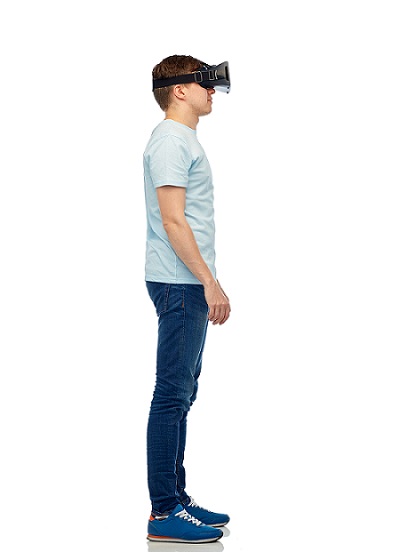
Innovative new technology is helping with Alzheimer’s education. 20 Illinois high school students at Northside College Preparatory School in Chicago, recently engaged in learning about Alzheimer’s disease (AD) by using virtual reality technology. The technology was featured in 2 robotic models, named Beatriz and Alfred Beatriz is a middle-aged Latina with various stages Alzheimer’s symptoms. Alfred is a 74-year-old man who has possible mild cognitive impairment and age-related hearing and vision loss.
The technology was developed by Carrie Shaw of Embodied Labs, Los Angeles. Neelum Aggarwal, MD, of Rush University Medical Center, Chicago, assisted Shaw in the development of the Beatriz module. Aggarwal also educated Shaw on what is happening in the brain in people with AD—“I’m often asked what does it feel like to have dementia? These virtual reality modules can help others experience that,” said Dr. Aggarwal. “For the students, it’s a good check to see if they have empathy for their patients and are [made] aware of any biases they may have towards people with dementia.”
Rush recruited 60 pharmacy and medical students, as well as research assistants, all who participated in virtual reality training. She also worked to bring the Art to Life program to Chicago.
Dr. Aggarwal works at Chicago Methodist Senior Services, a program that utilizes the virtual reality models to train its staff on how to visualize what it may feel like to have dementia. This helps to build empathy in the staff members who will care for those with AD in the community.
Who is Carrie Shaw?
Carrie Shaw’s personal story involved taking care of her mother—who was diagnosed with AD—when Carrie was a teenager. “I wanted to understand what my mom was going through with this disease and virtual reality allows us to recreate some of the perspective of someone living with Alzheimer’s,” said Shaw.
“Every patient is a person and has a story,” Shaw explained. “We want to help explain the science of what’s happening in the brain with the story of the person who has the dementia that will allow caregivers to be better providers and communicators.”
The high school students will use the virtual reality training to help increase their understanding of what it’s like to have dementia, or other conditions of aging, such as AMD (macular degeneration) or hearing problems.
“Technology like this may be useful in expanding awareness about what it is like to have Alzheimer’s disease dementia,” said Beth Kallmyer, MSW, Vice President of Care and Support for the Alzheimer’s Association. “It’s interesting that the creators of the modules also highlight other issues that some people experience as they age, including communicating inappropriately with others because they may not be able to see or hear well, in addition to the memory problems that are common for persons with Alzheimer’s.”
Click here to read part 1 of this article, and learn more about how VR technology helps students in the Bringing Art to Live Program.






